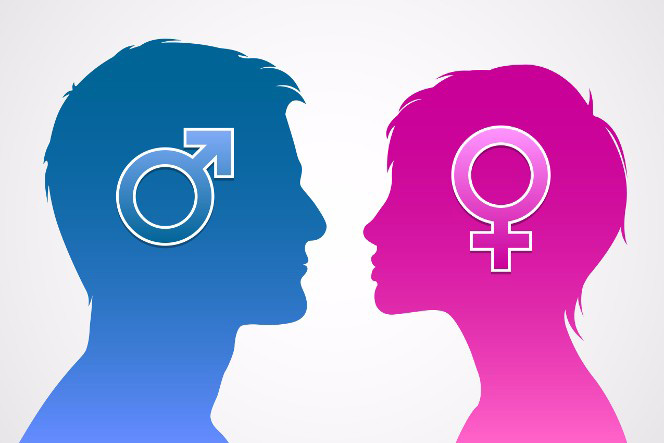Four leadership experts debate whether male and female bosses have different leadership styles attributable to their genders, or whether it all comes down to individual personalities.
Gender differences – whether alleged or real – in leadership style are a perennial subject of debate among leadership experts, researchers, and women’s leadership advocates. But is there really a brain-based difference between male and female leadership styles? And do men and women lead differently because of their sex?
The case against
Shane O’Mara
What does the male brain most resemble in the universe?’ (the answer is below).
‘Gender’ is a fast and handy way of coding populations and classifying individuals: it is a widely used shortcut, because it quickly evokes all sorts of associations about males and females. It allows us to be ‘cognitive misers’ when we make decisions and choices. But that’s all that coding by gender is.
There are infinite ways of coding populations: height; weight; education; nationality; food preferences; favourite football team. All fall short because all discard information about individuals in favour of group membership judgments and stereotypes. A better question than “do men and women lead differently?” is to ask “what collection of cognitive and non-cognitive traits (personality, motivation, grit, oratory, etc.) in a given context, time and place, lead to outcomes that employees value?” This is a very different way of thinking about leadership. After all, former UK Prime Minister Winston Churchill was the supreme leader for wartime, but for peace? History has provided the answer. Elizabeth I of England, by contrast, was a leader for war and peace!
To assume coding by gender reflects some unchanging and immutable underlying biological reality that describes all we need to know about an individual. That such an assumption is a basis for action is simply wrong – and self-evidently so, when you consider the complexity and variation found within, and between, human beings.
It is not at all obvious that using gender as a proxy for the traits of leaders is the most useful way of ensuring the best leaders are selected. Nor is it the case that the traits of leaders are immutable qualities, independent of time and place, arising irrevocably from gender and brain differences. We need to rethink how we conceive of leaders, and realize that leaders are individuals who may, or may not, be appropriate to the needs of the time, place and context they are in.
And more than that, the cognitive and non-cognitive traits – personality, motivation, grit, oratory and so forth – of leaders are not an unchanging given of the male or female brain. They can be learned, honed, sharpened through deliberate and self-conscious practice: this is the great lesson from the behavioural and brain sciences for leaders or aspirant leaders. We humans are quite capable of learning and profiting from experience, and of being changed for the better, or worse, by our experiences.
If we want diversity in leadership as a good thing in itself, then we need to change how we think about gender and leadership. We need to shift the focus to the traits and skills required to fulfil the demands of the position. We need to design evaluation procedures that are benchmarked according to objective standards, and we need to design processes in organizations that select for skills and traits, and set aside gender as the selection variable. Not changing is easy to achieve – it is the approach of the cognitive miser – but who ever said anything worthwhile was easy?
And, of course, the thing the male brain most resembles is the female brain – this was not a trick question!
Shane O’Mara is professor of experimental brain research and Wellcome Trust senior investigator at the Institute of Neuroscience, Trinity College, Dublin
The case for
Dr. Liz Mellon
Imagine this scene in your own life: You ask a man to fetch the butter from the fridge. He opens the door, scans the interior and reports “we’re out of butter”. You step up behind him, scan the same scene, reach past his shoulder and pick up the butter. When I try this scenario out in the executive classroom, it provokes smiles and laughter from women – and from men. We’ve all been there or somewhere similar. Men and women are different. We are driven by different hormones, are physically different and, if we are to believe Mark Gungor, our brains also operate differently (Google Gungor, he’s fun!).
Yet as soon as we get to work, political correctness steps in. We don the corporate cloak and become gender-neutral executives. Men deny differences, in case they are suspected of discriminating against women. Women deny differences, because they want to be seen as executives on a par with men.
But in these differences lies our greatest asset. We know that diverse teams sustain higher and more consistent performance over longer periods. Our sex is one of our most fundamental sources of diversity. This is why studies can confidently report that organizations that most aggressively promote women to executive positions have one quarter to one third higher profits than their industry average (Pepperdine University 2007, Catalyst 2009). Other recent studies from MIT report the so-called ‘C’ factor, showing that working groups with more women in them demonstrate higher collective intelligence – problem-solving capability – because women listen better and encourage more participation (Harvard Business Review, June 2011).
Our real challenge is imbalance. As Professor Alice H Eagly says: “When leadership is defined in masculine terms, the leaders who emerge are disproportionately men, regardless of the sex composition of the followers.”
Globally, there are still more men in the senior ranks, so the male view will dominate and male stereotyping of the characteristics of effective leadership can have a negative impact on the perception of a female leader’s capability. But if a woman acts like a man in order to fit into the male stereotype, to be seen as effective, this doesn’t work either. That’s because we also hold a stereotype about the acceptable range of female behaviours. Catalyst explains that, because of this stereotyping, even when women do speak up and ask (as we are constantly encouraged to do a male approach) we still don’t get what we request. You lose some, you lose some more.
Even if it’s only a perception that men and women lead differently, perception is all we have – it’s our reality. In a survey by the Innis Company, nearly 100% of women and 80% of men surveyed believed that men and women behave differently as leaders. Specifically, both men and women agreed that women lead by concentrating more on relationships, managing expectations and seeking input, while men focus on promoting their abilities and final outcomes. Do men and women lead differently – hell, yes! We need to get more balance into the system, so that we can leverage the best from each other, rather than let stereotyping and expectations render one sex or the other a disadvantaged minority.
Dr Liz Mellon PhD MBA is a doctor of psychology and former professor at London Business School
The case against
Dr. Srini Pallay
There are more than 1,400 definitions and 44 theories on leadership. But if we agree that by ‘lead’ we are implying a way of taking charge, a way of assuming responsibility or the ability to coordinate different business elements to reach a desired outcome, then my answer to this question is “no”. Men and women do not lead differently. Recent psychology and brain research supports my view.
Many studies have shown differences in how men and women are wired: women’s brains are better connected than men’s brains, and women are more empathic; women have smaller brains but greater amounts of grey matter; women have more neuronal processes despite having smaller neuron numbers; women like women more than men like men (even unconsciously) – the studies are too numerous to mention. On the surface, this smorgasbord of studies supporting male-female brain differences suggests that men and women must lead differently. Yet, other research suggests the truth is more complex.
In 2011, psychologist Daphna Joel pointed out that brains are neither male nor female, but intersex. Biological sex interacts with numerous factors in utero to determine the structure of the brain. In animals, sex differences can be abolished, reversed, created or exaggerated by environmental factors.
In 2016, Joel pointed out that human brains are also better described as one heterogeneous group. Rather than being dimorphically male or female, brains are multimorphic – they are male and female to different degrees. This results in a heterogeneous collage of ‘male’ and ‘female’ brain characteristics in every person. In that sense, male and female brains do not exist. And if that is the case, there can be no such thing as male or female leadership if we agree that the brain plays a major role.
In a separate study in 2016, Joel and her colleagues examined 1,400 human brain MRIs. The sample included males and females. They found extensive overlap in the distributions of grey matter, white matter, and connections assessed. Also, brains with features that are consistently at one end of the ‘maleness-femaleness’ continuum were rare.
We stereotype people based on our socialization and expectations. If we expect a woman to be more emotional, empathic or inclusive in her leadership approach, we will look for this. If we expect a man to be more logical, directed and transactional, we will look for that. Yet, I’m sure we would all be willing to admit that there are many empathic men and many logical and unemotional women. From as early as five years of age, we are prone to gender stereotyping. This continues into young adulthood and even older age. We see differences because we look for them. We have attentional biases: we are wired to overemphasize what threatens us.
The absence of evidence for male-female brains, the propensity to stereotype, and the bias to engage threat above all else, suggest that we may be better served looking at our gender biases than the differences in how we lead.
Dr Srini Pillay MD is assistant professor at Harvard Medical School
The Case for
Lisa Danels
Men and women lead differently. My academic co-authors make the research-based case but, as an executive with many years’ experience, I want to make my contribution to this debate more applied. I find men more singularly focused. They have the ability to narrow down and focus in on the task at hand – they don’t always build their emotional connections or act on subtle emotional signals.
Instead, the male focus is on what they need or where they need to drive the conversation or results. I have experienced women as more sensitive and able to tune into the unspoken aspects of a conversation, and focus on the needs of others, while at the same time achieving outcomes.
But, fundamentally, I believe the differences between men and women at work should be celebrated and leveraged, rather than denied. Diversity makes work more interesting, productive and worthwhile, as long as we can take a strengths-based approach. So with this in mind, let me suggest how men and women might benefit from their different approaches to leadership.
What do men do well? I’d like to highlight a couple of areas that I have observed. Men are better at negotiating their conditions of success. When they take on a new role, they are better at candidly requesting the resources they can see they will need to succeed, whether it be an enhanced budget or certain people removed from the team.
Women, on the other hand, tend to dive straight in and do their best in the face of existing challenges, which can be a struggle. Another key difference is that men ‘fake it ‘til they make it’. They are not afraid to take on opportunities for which they know they are not fully qualified, figuring it out as they go along. Women, on the other hand, prefer to wait until they are fully developed and feel ready for the new direction.
What do women do well? We are more emotionally sensitive and therefore better able to read the nuances of a situation. While a conversation may be factually accurate, human beings simultaneously experience emotions, or even a sense of challenge to their own identity, that can undermine later execution of any decision reached in the moment.
Women are better at tuning into these emotions and dealing with them, so that they don’t derail a viable conclusion. I have also observed that women tend to deal more holistically with an issue. Rather than taking a straight line to a one-dimensional conclusion, they are able to include multiple aspects and options, so that decisions are richer and multifaceted.
For example, in my world of talent management, conversations about candidates’ qualifications can also take into account a broader set of factors, such as personal motivation, experiences, development opportunities, and support from a spouse or partner.
At Boston University, Erin Reid’s research shows that when women need to spend more time with their families, they discuss the issue openly at work, but are then deemed less than ideal employees and become marginalized. Faced with the same dilemma, men quietly reorganize their work patterns and achieve the same outcome while still being regarded as superemployees. If only we could learn to embrace different approaches, then the outcomes might also become regarded as equivalent.
Lisa Danels is global head of talent innovation and predictive analytics at Novartis Pharma
All contributors write in a personal capacity.
An adapted version of this article appeared on the Dialogue Review website.



